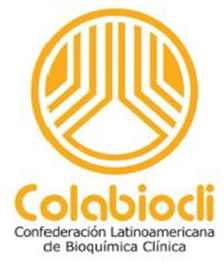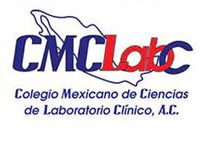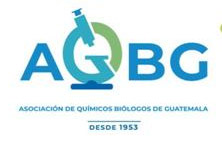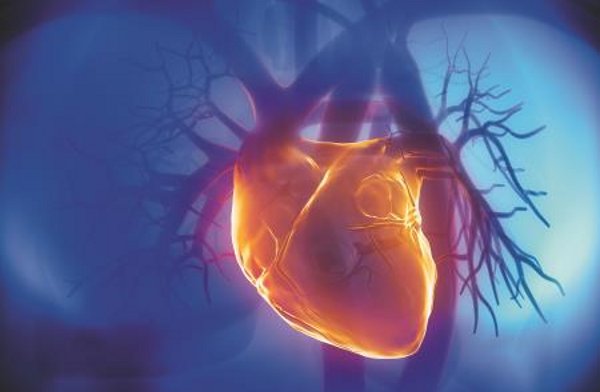Laboratory professionals and clinicians seeking to use high-sensitivity cardiac troponin assays to diagnose acute myocardial infarction should power the 99th percentile upper-reference limit “for each sex and use a minimum of 300 males and 300 females,” writes Yader Sandoval of Hennepin County Medical Center/Abbott Northwestern Hospital. Sandoval also emphasizes the importance of understanding the absence of a universal delta cTn value for hs-assays. Laboratory medicine professionals in the US should begin educating clinicians on hs-cTn assays in preparation for FDA clearance, Sandoval writes.
Implementing High Sensitivity Cardiac Troponin Assays
High-sensitivity cardiac troponin (hs-cTn) assays promise better diagnostic accuracy for acute myocardial infarction (AMI), allowing earlier and more effective treatment for patients. This is why it is essential that laboratory medicine professionals and clinicians understand the performance of these tests and how to use them. With this challenge in mind, an expert group of laboratorians, emergency medicine clinicians, and cardiologists worked for more than 2 years on hs-cTn education materials, following-up on a mini-review that tackled the question, how does an assay become designated high-sensitivity (1)? This group, all members of the International Federation of Clinical Chemistry and Laboratory Medicine (IFCC) Task Force on Clinical Applications of Cardiac Bio-Markers, also collaborated with representatives from in vitro diagnostics companies who have expertise in hs-cTn troponin immunoassays.
In late 2014, the task force published evidence-based consensus findings on hs-cTn assays and how to implement them into clinical practice and research (2). These educational guidelines focus on two central issues—the 99th percentile upper-reference limit (URL), and calculating serial change values (delta cTn) in accord with the Third Universal Definition of Myocardial Infarction (3). This document is a global collaboration and reflects a balanced perspective on hs-cTn assays from both clinical and laboratory viewpoints. The task force believed that without guidance on the how and why of implementing hs-assays into practice, the waters would continue to be choppy, the scientific and medical literature would not be consistent, and it would be difficult to appropriately compare and contrast published science on diagnostic or risk outcomes-assessment studies.
The task force’s top priority has been addressing the potential for inconsistent use of the analytical characteristics of hs-cTn assays, as the field has been without definitive consensus (4). The task force document is assay-blind to whether cTnI or cTnT is measured for patient care, but proposes clear operational recommendations. Unfortunately, U.S.-based laboratories cannot put these recommendations into practice, as the Food and Drug Administration (FDA) has not yet cleared hs-cTn assays for clinical use.
Clarity on the 99th Percentile
The 99th percentile URL has long been recognized in clinical practice guidelines as a key component of diagnosing AMI (3). Importantly, this value is determined from a normal reference population, yet no consensus recommendations had been made on how normality studies should be performed by either investigators or industry in the era of hs-cTn assays (5). The task force document now provides definitive guidance: the 99th percentile should be powered for each sex and use a minimum of 300 males and 300 females. Because men have higher values than women, it is very important to determine sex-specific cutoffs.
From a clinical perspective, the relevance of sex-specific cutoff relates to the under-diagnosis of AMI in women. Questions have arisen as to whether this under-diagnosis is being driven by the use of single, overall 99th percentiles (as currently recommended for use with the hs-cTnT assay), rather than sex-specific cutoffs, as is the case with hs-cTnI assays (6). A recent prospective cohort study examined this issue and concluded that an hs-cTnI assay with sex-specific diagnostic thresholds could double the diagnosis of AMI in women, yet whether the implementation of such thresholds might impact outcomes and sex inequalities remains to be clarified (6).
The IFCC document also provides clear recommendations on what constitutes an hs-cTn assay. These assays should have an analytical precision (coefficient of variation, CV) of ≤10% for each sex-derived 99th percentile and should measure cTn above the limit of detection (LoD) in ≥50% of healthy individuals. This is important for clinicians and laboratorians alike, as assays could be branded or marketed as high-sensitivity without meeting IFCC task force recommendations.
Table 1 lists hs-cTn assays currently being proposed by manufacturers for clinical and/or research use. Assay characteristics should be carefully interpreted to determine whether that particular test indeed qualifies as hs. Currently, cTn assays with a %CV >10% but ≤20% at the 99th percentile are deemed clinically usable and designated as contemporary assays (3). As hs-cTn assays are implemented globally, it is relevant to highlight that a fundamental aspect of these assays is their excellent analytical precision at lower concentrations around the assay’s LoD.
Acute Versus Chronic Myocardial Injury
The second major issue the task force took on was how to calculate the delta or serial cTn change value. This helps differentiate acute from chronic myocardial injury (7). Using a delta cTn value is critically important to improving the diagnostic specificity for AMI versus elevated levels due to a chronic non-acute coronary syndrome (ACS) injury that might be related to structural heart disease. The task force highlighted numerous issues about delta cTn, including problems related to the gold standard diagnosis of AMI, spontaneous variation and timing of serial cTn for ruling in and ruling out MI, and the heterogeneity of cTn assay methods that impact delta change calculations.
It is critical for both laboratorians and clinicians to understand that there is no universal delta cTn value for all hs-assays. Manufacturers or clinical studies need to determine a delta value for each hs-cTnI and hs-cTnT assay, and these values are not interchangeable. As a result, one potential problem will be the understanding that the delta value will depend on the time interval used to perform the calculation. For example, using the baseline specimen drawn at presentation as 0 hours, the delta value could differ between using a second sample drawn at 1 hour, 2 hours, or 3 hours, and compared to the first 0 hour sample. For hs-assays the literature supports determining deltas based on absolute concentration changes and not percentage changes, which were initially shown to be useful for contemporary, less analytically sensitive assays.
Laboratory medicine professionals must prepare to educate clinicians on this point, emphasizing that one delta value does not fit all assays, that serial change delta values are assay-dependent, and that the utility of hs-cTn is related to the onset of ischemic symptoms and the timing of presentation. Another concern is the great variability in the timing of cTn orders—both within hospitals by different providers as well as between different hospitals. For example, physician A at hospital X might order cTn at 0, 4, and 8 hours without a fixed preset order system, whereas physician B at hospital Y might have to follow a pre-designed hospital-wide order set of 0, 3, and 6 hours.
From a laboratory perspective, research has found that more than 40% of cTn testing using contemporary assays might be inappropriate, both in patients with and without clinical symptoms of ACS (9,10). The take-home message is that both clinical and research studies need to pay close attention to the details, including the timing of specimen collection, the timing of patient presentation related to symptom onset when developing delta values, comparing one assay to another, and how the assays are used in clinical practice. It is fundamental to embrace the concept that a rise or fall in cTn relates to capturing the window of time after an acute cardiac event—and consequently, in late presenters, a cTn plateau might be noted across serial cTn measurements. Confounding the general principle of delta change value in ruling in or ruling out AMI, the absence of a clear delta does not exclude the possibility of AMI in late presenters.
For clinicians using cTn on a regular basis, it is fundamental to understand the clinical context of a cTn measurement. In order to appropriately interpret results, clinicians must assess each patient’s pre-test probability for AMI and integrate the patient’s clinical circumstance in which the cTn measurements are being performed. cTn increases should be classified as either acute or chronic, the latter typically involving patients with chronic congestive failure and renal failure. Furthermore, most clinically encountered cTn increases will be categorized as myocardial injury (which may be ischemic or non-ischemic in nature), type 1 MI or type 2 MI (11). Another key clinical message is that not all cTn increases are due to AMI.
Independent, but closely associated with the work of the task force, was a meeting between FDA and several opinion leaders in the cTn biomarker field, to discuss concerns about the heterogeneity of analytical and clinical protocols used in studies for clearance of hs-cTn assays (12). The opinion leaders advocated that FDA use standardized study protocols, because, having worked with industry in clinical studies used to submit their hs-cTn assays for 510(k) clearance, they knew about the variability between the specific protocols used by different companies in their studies. The group also recommended development of a white paper that could be given to all companies as a starting point for their analytical and clinical evaluations. This would not only reduce complexity and permit better comparisons among different hs-cTn assay methods, but also provide suggestions to achieve these goals. Although FDA seemed supportive of the evidence-based analytical and clinical cTn literature presented at the meeting, the agency chose not to endorse the published paper.
Conclusion
The task force document provides important insights and recommendations for hs-cTn assays (see Table 2). The educational recommendations are fundamental, as they provide a balanced multidisciplinary consensus as we move forward towards global use of hs-cTn assays. Endorsement of these ideas, which we know will evolve over time, is important for future studies defining normality and 99th percentiles. They will also enhance the quality of diagnostic accuracy and outcomes assessment investigations with hs-cTn assays, including delta serial change values to improve specificity for ruling out AMI.
It is not too early for laboratory medicine professionals in the U.S. to start the educational process with their clinical colleagues by sharing key findings in the growing body of literature on using hs-cTn assays. They should get a head start so that when FDA clears hs-cTn assays, there will not be a delay in implementation. If these recommendations are implemented globally for clinical patient care and research, and published with uniformity, the task force will have been successful in easing the challenge of change and offering transparency as we navigate a shift towards improved use of cTn. Read the literature and prepare your providers, as hs-cTn assays are coming soon to a lab near you.
Author: Fred Apple, PhD and Yader Sandoval, MD
Fred Apple, PhD, is the medical director of clinical laboratories at Hennepin County Medical Center and professor of laboratory medicine at the University of Minnesota in Minneapolis. He is a member of the IFCC Task Force on Clinical Applications of Cardiac Bio-Markers. +Email: apple004@umn.edu
Yader Sandoval, MD, is the chief cardiology fellow at Hennepin County Medical Center/Abbott Northwestern Hospital in Minneapolis, Minnesota.
Disclosure: Fred Apple, PhD, has received grants or research support from Siemens, Roche, Abbott, Ortho-Clinical Diagnostics, Alere, Nanomix, and Trinity Biotech; consultant fees from Phillips Healthcare Incubator; and honoraria from Abbott and Roche.
References
- Apple FS, Collinson PO, IFCC Task Force on Clinical Applications of Cardiac Biomarkers. Analytical characteristics of high-sensitivity cardiac troponin assays. Clin Chem 2012;58: 54–61.
- Apple FS, Jaffe AS, Collinson P, et al. on behalf of the IFCC Task Force on Clinical Applications of Cardiac Bio-Markers. IFCC educational materials on selected analytical and clinical applications of high-sensitivity cardiac troponin assays. Clin Biochem 2015;48:201–23.
- Thygesen K, Alpert JS, Jaffe AS, et al., the writing group on behalf of the Joint ESC/ACCF/AHA/WHF Task Force for the Universal Definition of Myocardial Infarction. Third universal definition of myocardial infarction. J Am Coll Cardiol 2012;60:1581–98.
- Korley FK, Jaffe AS. Preparing the United States for the high-sensitivity cardiac troponin assays. J Am Coll Cardiol 2013;61:1753–8.
- Sandoval Y, Apple FS. The global need to define normality: The 99th percentile value of cardiac troponin. Clin Chem 2014;60:455–62.
- Shah A, Griffiths M, Lee KK, et al. High-sensitivity cardiac troponin and the under diagnosis of myocardial infarction in women. Brit Med J 2015;350:7873–80.
- Jaffe AS, Moeckel M, Giannitsis E, Huber K, Mair J, Mueller C, et al. In search for the Holy Grail: Suggestions for studies to define delta changes to diagnose or exclude acute myocardial infarction: A position paper from the study group on biomarkers of the Acute Cardiovascular Care Association. Eur Heart J Acute Cardiovas Care 2014;3:313–6.
- Shah ASV, Anand A, Sandoval Y, et al. High-sensitivity cardiac troponin at presentation in patients with suspected acute coronary syndrome: A cohort study. Lancet 2015; doi.org/10.1016/S1040-6736(15)00391-8.
- Fraga OR, Sandoval Y, Love SA, et al. Cardiac troponin testing is overused after rule-in or rule-out of myocardial infarction. Clin Chem 2015;61:436–7.
- Love SA, McKinney ZJ, Sandoval Y, et al. Electronic health record-based performance improvement project to document and reduce excessive cardiac troponin testing. Clin Chem 2015;61:498–504.
- Sandoval Y, Smith SW, Apple FS. Supply/demand type 2 myocardial infarction: Should we be paying more attention? J Amer Coll Card 2014; 63:2079–87.
- Apple FS, Hollander J, Wu AHB, et al. Improving the 510k FDA process for cardiac troponin assays: In search of common ground. Clin Chem 2014:60:1273–5.
Date: DEC.1.2015
Source: AACC’sClinical Laboratory News
























































